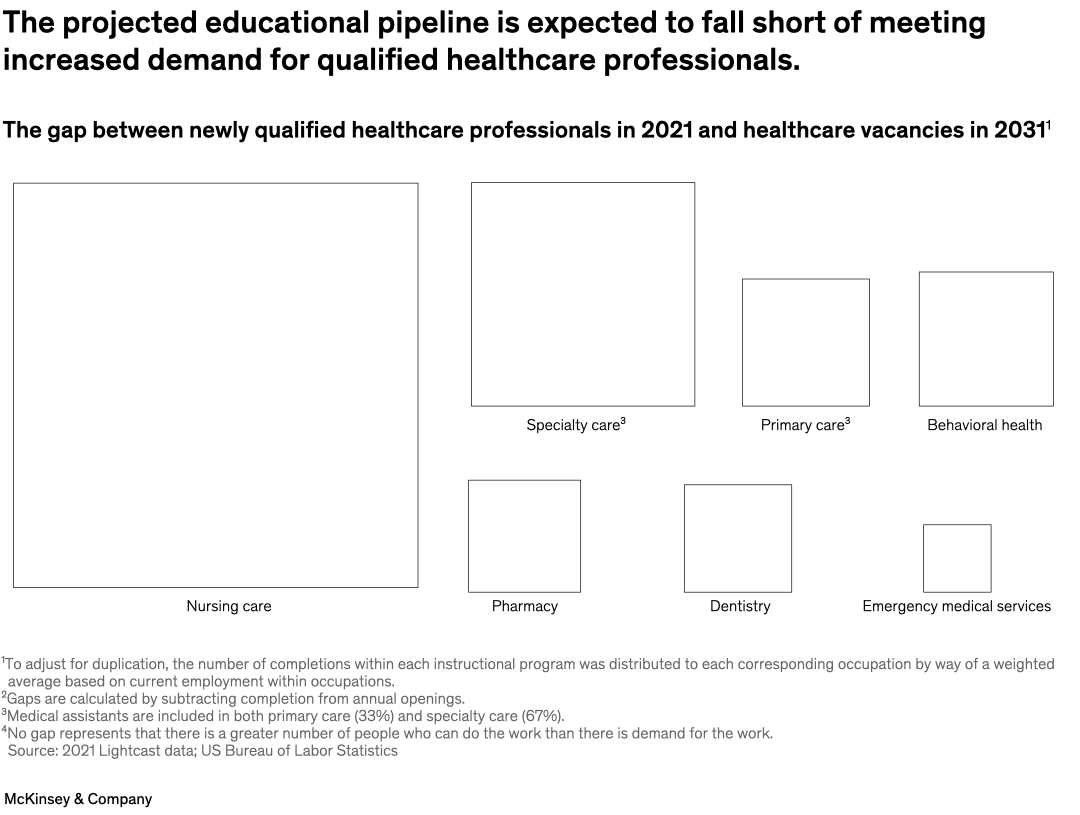The healthcare industry is facing a shortage of workers, as the need for nurses and others in the field is expected to rise. Boosting the educational pipeline could help address a potential talent gap, find senior partner Brandon Carrus and coauthors. For example, we project there will be one million additional nursing care jobs by 2031, which outpaces the number of those expected to complete degree programs based on current capacity.

The main visual is a series of squares each
representing the total estimated healthcare
vacancies in the US by 2031, broken down by
different medical specialities. Inside each
square is another square representing the
newly qualified healthcare professionals
within each speciality. The visual is focussed
on the gap between the two. From left to
right the gaps are 831,212 for nursing care
workers, 62,604 for specialty care workers,
13,420 for primary care workers, 38,675 for
pharmacy workers, 36,517 for dentistry, and
11,701 for emergency medical services. There
is no gap in the need for behavioral health
workers.
To read the article, see “How health systems and educators can work to close the talent gap,” September 29, 2023.